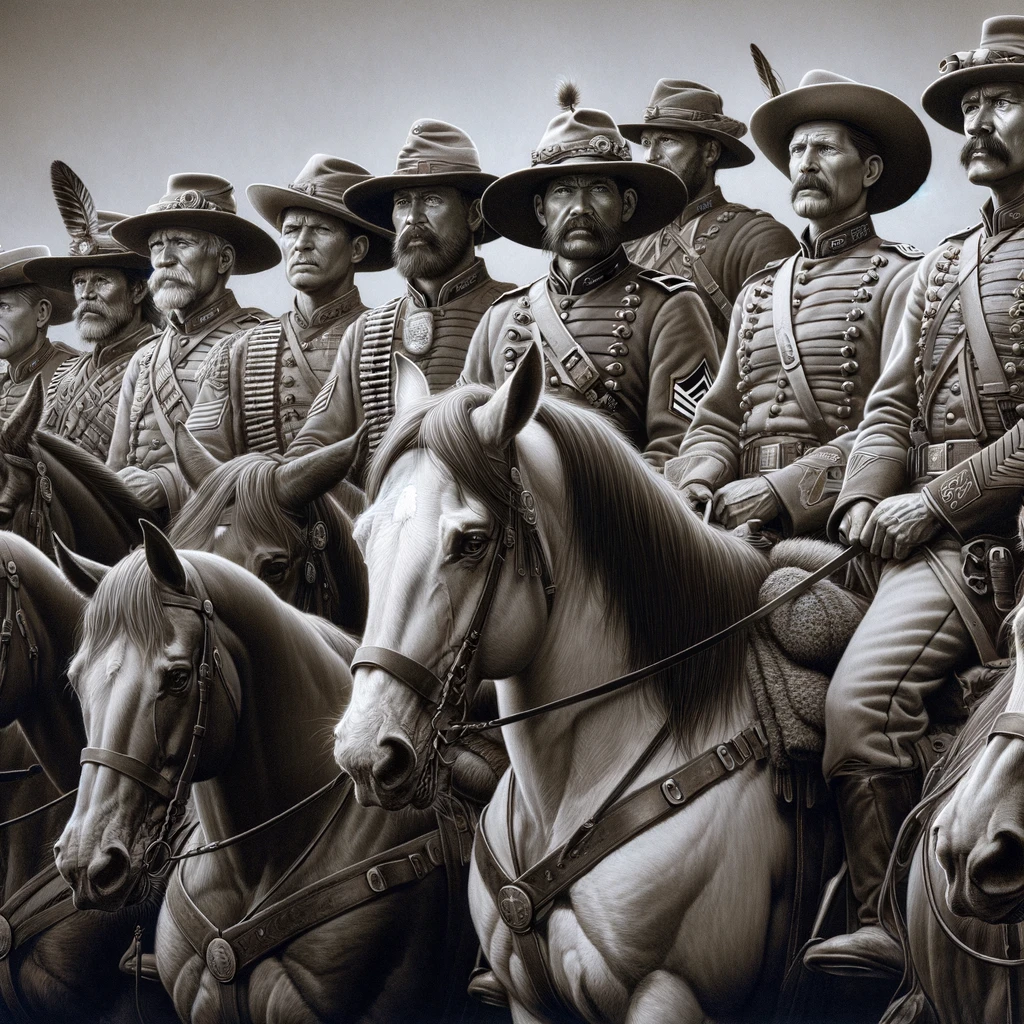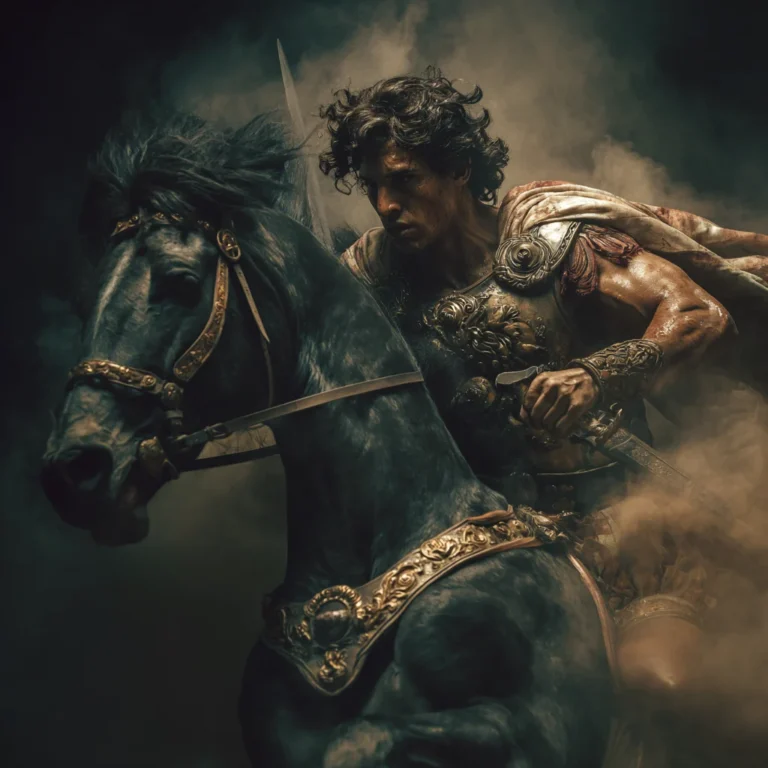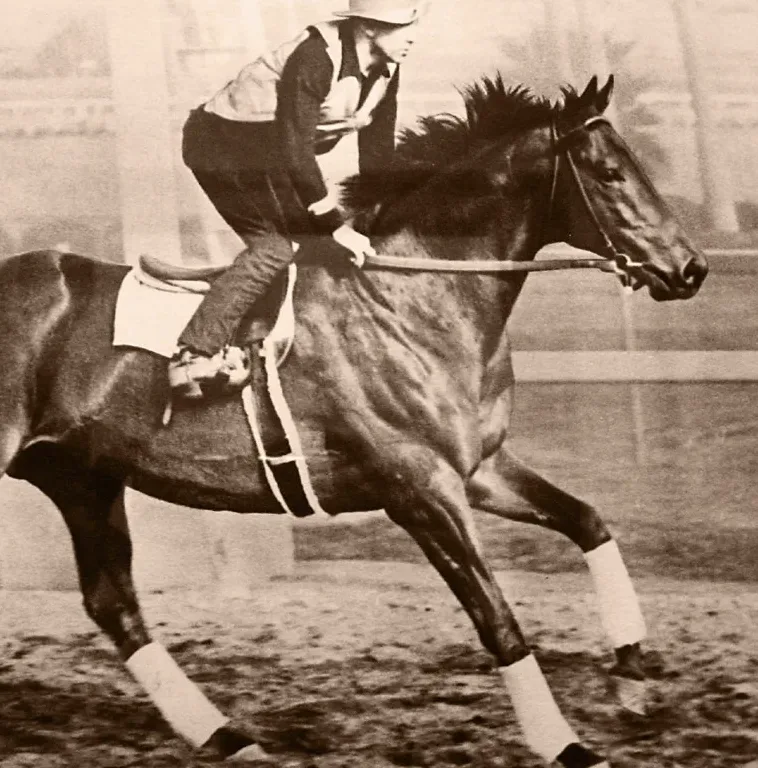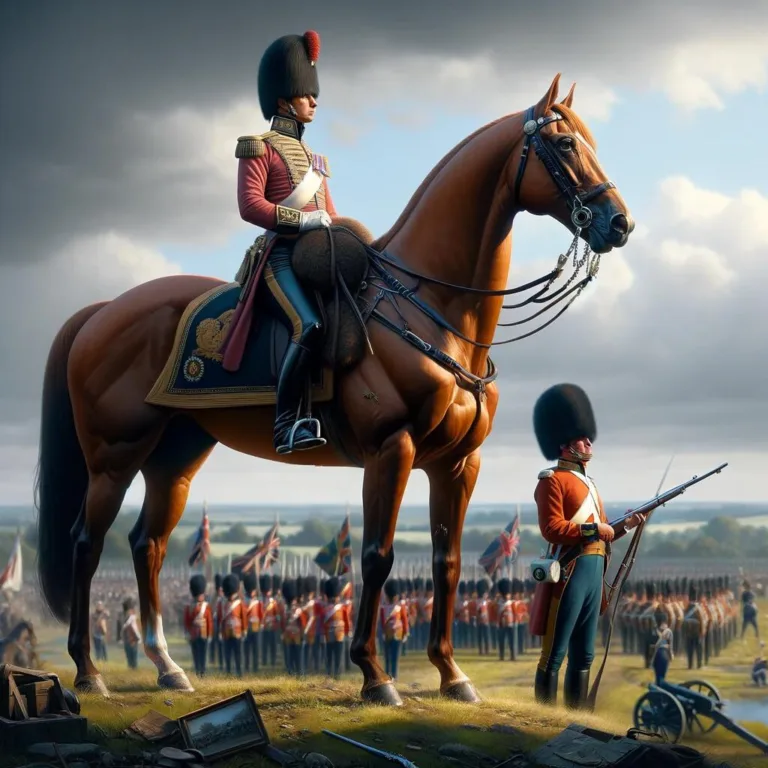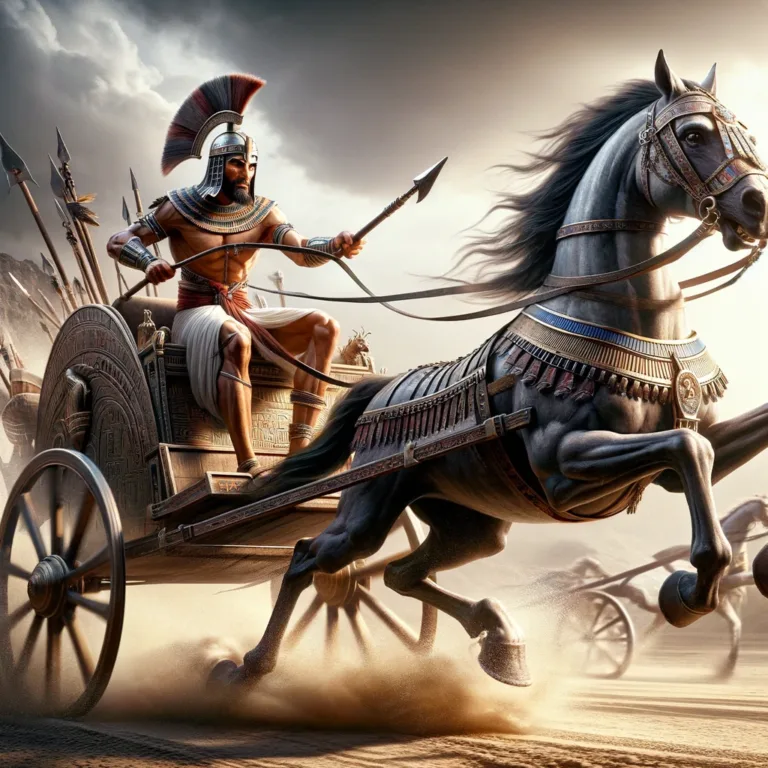Comanche: The Lone Equine Survivor of the Battle of Little Bighorn
In the annals of American history, few battles stir as much intrigue and poignancy as the Battle of Little Bighorn. Fought on June 25, 1876, near the Little Bighorn River in Montana Territory, this conflict marked a pivotal moment in the long and troubled history of the American frontier. The battle pitted federal troops led by Lieutenant Colonel George Armstrong Custer against a coalition of Native American tribes, including the Lakota Sioux, Cheyenne, and Arapaho. Known for its brutal intensity and the stunning defeat of the 7th Cavalry Regiment, the battle remains a subject of extensive study and debate.
Amidst this historic clash, a sole survivor on the U.S. Cavalry’s side emerged as an unlikely hero – a horse named Comanche. Renowned for his steadfastness and resilience, Comanche was more than just a survivor; he became a living symbol of the battle’s ferocity and the deep bonds between soldiers and their steeds. Found grievously wounded but steadfast on the battlefield, his survival was nothing short of miraculous, considering the overwhelming defeat and loss of life, including Custer and all the men of his immediate command.
Comanche’s story is not just one of survival against staggering odds; it’s a testament to the enduring spirit and resilience that horses have displayed throughout history, often alongside their human counterparts in times of conflict. As you and your horse traverse paths old and new, Comanche’s tale stands as a poignant reminder of the extraordinary roles horses have played in shaping our histories and legends. This article aims to shed light on this remarkable equine’s life before, during, and after that fateful day, exploring the depths of his legacy and the indelible mark he left on American military and equine history.
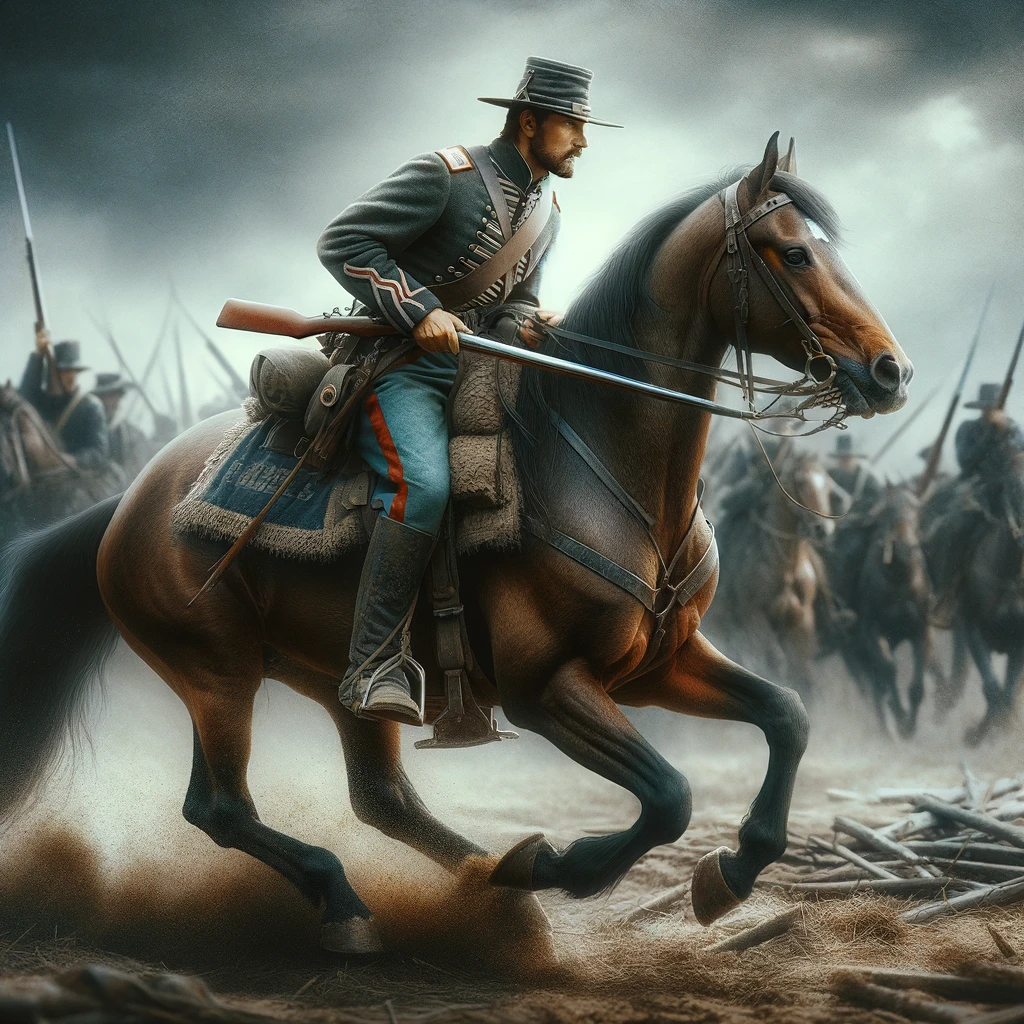
Comanche’s Early Life and Military Service
Before Comanche etched his name into the annals of American history, his beginnings were notably humble and largely unrecorded. Born around 1862, Comanche was a Mustang, a breed renowned for its hardiness and resilience. These traits, inherent in the Mustang breed, would later contribute significantly to his survival and legend. His coat, a mix of bay and dun, gave him a distinctive appearance, blending the rugged beauty of wild horses with the stature of a trained military steed.
Comanche’s journey to becoming a member of the U.S. 7th Cavalry began when he was bought by the army in 1868. Captain Myles Keogh of the 7th Cavalry spotted him among a herd of wild horses and was immediately drawn to his spirited demeanor and sturdy build. Recognizing the horse’s potential, Keogh acquired him for $90, a considerable sum at the time, and named him Comanche to honor his fighting spirit, akin to that of the Native American warriors.
The training that Comanche received was typical of military horses of that era. It focused on conditioning him to endure the rigors of cavalry life, which included long marches, exposure to gunfire, and the ability to carry heavy loads. Given his Mustang heritage, Comanche naturally possessed incredible stamina and adaptability to diverse terrains, both crucial for the challenging life in the cavalry.
In the 7th Cavalry, Comanche was more than just a mount; he was a comrade-in-arms. His bond with Captain Keogh and the other soldiers was emblematic of the relationships formed between cavalrymen and their horses – bonds built on trust, respect, and mutual reliance. Comanche was trained not only to respond to basic riding commands but also to be attuned to the chaos of battle, a skill that would later prove critical to his survival.
Comanche’s early years with the 7th Cavalry were marked by routine patrols and skirmishes, a precursor to the larger battles that lay ahead. Throughout these experiences, his resilience and unflappable nature shone through, earning him a reputation within the regiment as a reliable and steadfast companion.
This section of Comanche’s life lays the foundation for understanding his incredible resilience during the Battle of Little Bighorn. His early experiences, intrinsic qualities of his breed, and the bond he formed with the soldiers of the 7th Cavalry all contributed to the remarkable legacy he would later establish as a symbol of perseverance and loyalty in the face of overwhelming adversity.

The Battle of Little Bighorn
The Battle of Little Bighorn, often referred to as Custer’s Last Stand, was a pivotal moment in the Great Sioux War of 1876. On June 25, 1876, the U.S. 7th Cavalry, under the command of Lieutenant Colonel George Armstrong Custer, engaged with a coalition of Native American tribes, including the Lakota, Northern Cheyenne, and Arapaho. The tribes, under the leadership of Sitting Bull, Crazy Horse, and other chiefs, were resisting government attempts to confine them to reservations. This battle was a culmination of escalating tensions and a stark embodiment of the broader conflict between the U.S. government and indigenous peoples.
In this historic confrontation, cavalry horses like Comanche played a crucial role. These horses were not mere tools of war; they were integral to the cavalry’s mobility and effectiveness. Trained to maneuver quickly, withstand gunfire, and carry their riders into the heart of battle, these animals displayed remarkable courage and endurance. The bond between the cavalrymen and their horses was a fusion of trust and mutual dependence, critical in the chaos of battle.
The battle itself was chaotic and brutal. Custer’s forces, divided into several battalions, were vastly outnumbered. The Native American warriors, skilled in guerrilla warfare and highly motivated to defend their land and way of life, fought with ferocity and tactical acumen. The terrain, with its rolling hills and grassy plains, offered little cover and made the cavalrymen and their mounts highly visible targets.
For horses like Comanche, the conditions were extreme. The sounds of gunfire and the scent of blood and gunpowder would have been overwhelming, triggering their natural flight instincts. Yet, their training and bond with their riders compelled them to stay and face the danger. Amidst the thundering of hooves, the clash of weapons, and the cries of both men and horses, these animals showed extraordinary bravery.
The battle ended in a devastating defeat for the U.S. 7th Cavalry. Custer and all the men under his immediate command were killed, and the regiment suffered significant losses. In the aftermath, the battlefield was a grim testament to the battle’s intensity, with fallen men and horses scattered across the landscape. The survival of Comanche, severely wounded but alive, amidst this carnage, was nothing short of miraculous. His endurance and fortitude in such a dire situation epitomize the extraordinary resilience and loyalty of cavalry horses in the face of unimaginable adversity.
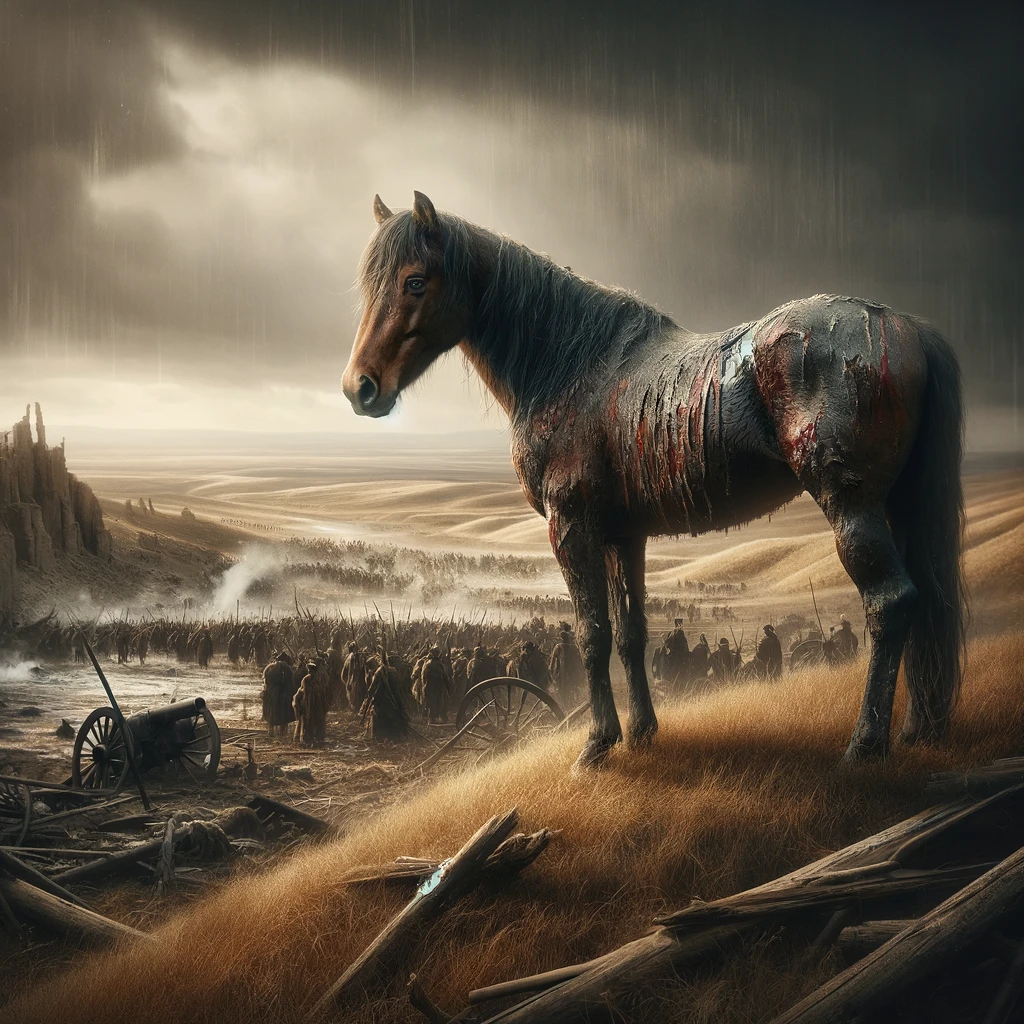
Comanche’s Survival and Discovery
In the haunting silence that followed the tumult of the Battle of Little Bighorn, a scene of desolation unfolded. The once vibrant plains were now marred by the tragic aftermath of the conflict. Amidst the scattered remains of soldiers and horses, a remarkable discovery was made – Comanche, standing wounded but alive, amidst the carnage. His survival was a stark contrast to the fate that had befallen the rest of his cavalry unit.
Comanche was found by soldiers of the 7th Cavalry who arrived on the scene days after the battle. His body bore the scars of conflict – he was found with multiple arrow wounds and bullet injuries. These wounds were not merely superficial; they were a testament to the intense struggle he endured. His survival, given the severity of his injuries, was nothing short of extraordinary and spoke volumes about his incredible resilience.
The horse’s condition was critical, yet his spirit remained unbroken. As a seasoned war horse, Comanche had been through skirmishes and battles, but nothing of this magnitude. His training had instilled in him a remarkable steadfastness, but it was his innate strength and will to survive that saw him through this ordeal. In these dire circumstances, his resilience was a beacon of hope and a poignant reminder of the enduring spirit possessed by horses.
The care that Comanche received following his discovery was a reflection of the deep bond between him and the cavalry. His wounds were tended to with the utmost care, and he was given time to recover. The soldiers who cared for him saw not just a horse, but a fellow survivor, a creature that had shared in their trials and tribulations.
Comanche’s recovery was slow but steady, a testament to his robust constitution and the diligent care he received. As he recuperated, his story spread, turning him into a symbol of survival and resilience. His wounds would heal, but they left indelible marks that told a story of courage and endurance.
Comanche’s Later Life and Legacy
Following his remarkable recovery from the wounds sustained at the Battle of Little Bighorn, Comanche’s life took a turn that was as symbolic as it was serene. He became a living legend, revered not only within the U.S. 7th Cavalry but also by the public. His story transcended the usual narratives of war, encapsulating themes of survival, loyalty, and resilience.
Comanche’s treatment post-battle was one of great honor and respect. The U.S. Army officially retired him from active service, a rare distinction for a horse. He was not to be ridden again, a decision that underscored his valor and the reverence the army held for him. Instead, he was allowed to roam freely within the confines of Fort Riley, Kansas, where he became a familiar and cherished figure.
His role as a symbol of the Battle of Little Bighorn and a broader icon in U.S. military history was solidified when he was made the subject of numerous articles and stories. People traveled from far and wide to see the horse that had survived Custer’s Last Stand. In this way, Comanche served as a tangible link to a pivotal moment in American history, embodying the spirit of all those who had fought and fallen in the battle.
In addition to his leisurely life at Fort Riley, Comanche occasionally participated in ceremonial roles. He was featured in parades and military ceremonies, draped in a special blanket that bore the insignia of the 7th Cavalry. These appearances were not merely for show; they were poignant reminders of his and the cavalry’s sacrifice and bravery. During such events, he was often led by a groom, as a mark of respect for his service and in recognition of his retirement status.
Comanche lived out his days in peaceful retirement until he died in 1891. His passing was marked by genuine mourning, indicative of the deep impact he had made. In a fitting tribute to his legacy, his remains were preserved, and he was later put on display at the University of Kansas Natural History Museum, serving as an enduring symbol of the battle, the bravery of those who fought, and the extraordinary resilience of horses.
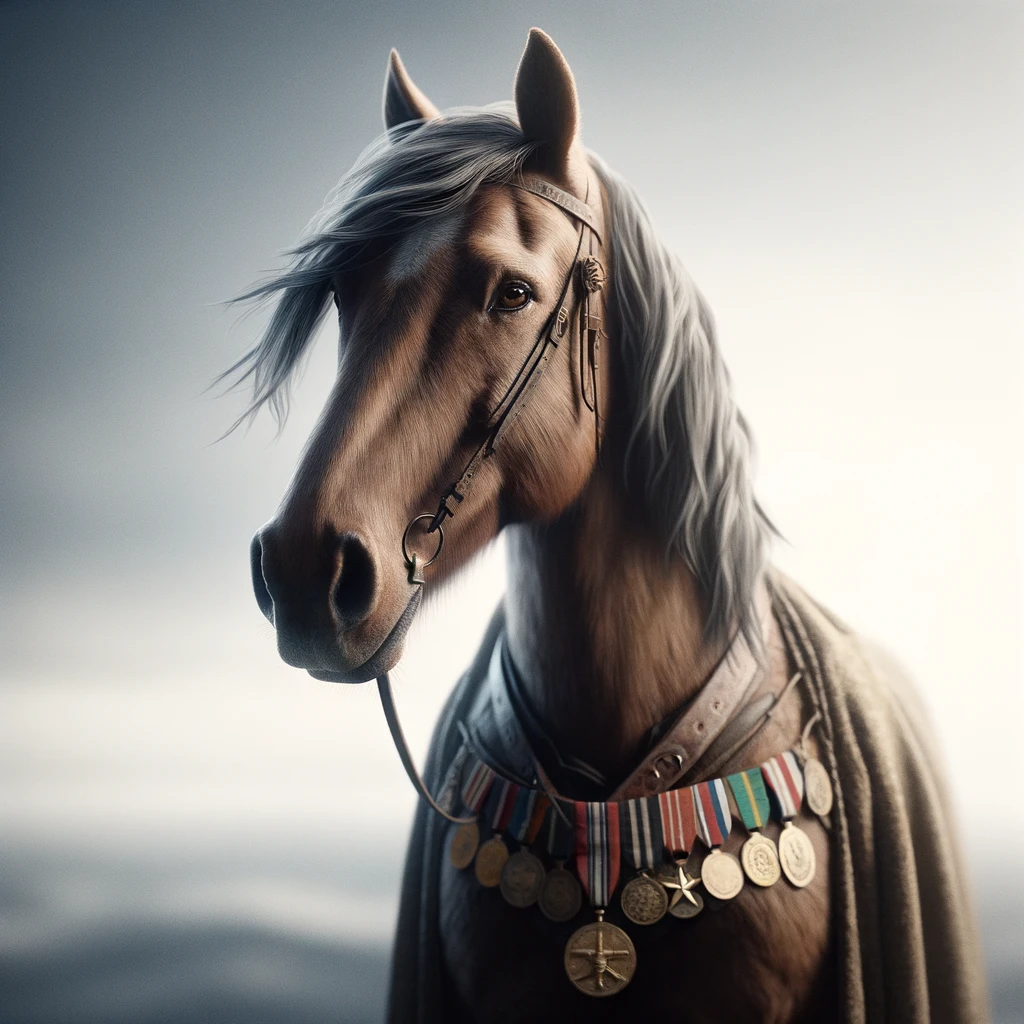
The Symbolism of Comanche in Military and Equine History
Comanche stands as a profound symbol in both military and equine history, representing far more than just a survivor of a notorious battle. His story transcends the specifics of the Battle of Little Bighorn, touching upon the deep, almost sacred bond between soldiers and their horses, and highlighting the integral role of these animals in military history.
In the annals of military history, Comanche is emblematic of the unwavering loyalty and bravery that horses have exhibited throughout human conflicts. His survival and the respect he garnered afterward reflect a broader acknowledgment of the sacrifices made by these noble creatures in service to their human counterparts. The fact that he was retired and treated with such reverence is indicative of the deep emotional connections that soldiers formed with their horses. These animals were not mere tools of war; they were companions, trusted allies, and in many cases, saviors on the battlefield.
In equine lore, Comanche’s story resonates as a testament to the resilience, courage, and intelligence inherent in horses. His ability to survive severe wounds and the chaos of battle speaks to the extraordinary physical and mental fortitude of these animals. His story is a source of inspiration and a reminder of the indomitable spirit that horses possess. It’s a narrative that echoes in the hearts of all who admire and love these magnificent creatures.
Furthermore, Comanche’s legacy is interwoven with the history of the American West, a period marked by conflict, expansion, and significant cultural shifts. As a symbol, he represents a bridge between different eras and peoples: the U.S. military, the Native American tribes, and the untamed spirit of the American frontier. His story encapsulates a pivotal moment in American history, offering insights into the complexities and challenges of that time.
Comanche’s enduring legacy in military and equine history is a powerful reminder of the role that animals have played in shaping human history. His story is not just one of survival; it’s a narrative that highlights the respect, honor, and deep emotional connection that humans have developed with horses over centuries. This bond, forged in the fires of conflict and nurtured in the tranquility of peacetime, remains a poignant and enduring aspect of our shared history with these noble animals.
Conclusion
The story of Comanche is more than a tale of survival; it is a saga that captures the essence of courage, resilience, and the extraordinary bond between humans and horses. Comanche’s journey from the battlefields of the American West to his revered status in military and equine history is a testament to the enduring spirit and strength of these noble creatures.
Comanche’s experience at the Battle of Little Bighorn, his remarkable survival, and his subsequent life of honor and respect encapsulate the profound role that horses have played in human endeavors. His story goes beyond the historical specifics of a single battle; it touches upon the universal themes of loyalty, bravery, and the unbreakable bond formed in the crucible of conflict.
The lessons and inspiration drawn from Comanche’s story are manifold. His resilience in the face of overwhelming odds reminds us of the incredible capabilities and inner strength that horses possess. His revered treatment post-battle reflects a deep-seated respect and gratitude towards these animals, acknowledging their contributions and sacrifices. Comanche’s legacy serves as a reminder of the invaluable role horses have played throughout history, not just as beasts of burden or instruments of war, but as faithful companions, heroes in their own right.
In remembering Comanche, we are reminded of the countless unnamed horses who have served alongside humans, sharing in their triumphs and tragedies. His story is a tribute to them all, highlighting the indomitable spirit that characterizes these magnificent creatures. Comanche’s tale continues to inspire and resonate, a timeless reminder of the courage, resilience, and extraordinary capabilities of horses. Read about Bucephalus, Alexander the Great’s famous horse
The Horse, Comanche | KU Memorial Union
But the Battle of Little Big Horn was not just another skirmish. Comanche was recognized as more than a horse. He was – and remains – a symbol. And thanks to …
Comanche: Horse Survivor of Little Bighorn
Comanche was a U.S. cavalry horse who participated in many battles in the West including the Battle of Little Bighorn. He achieved fame because he was the …

